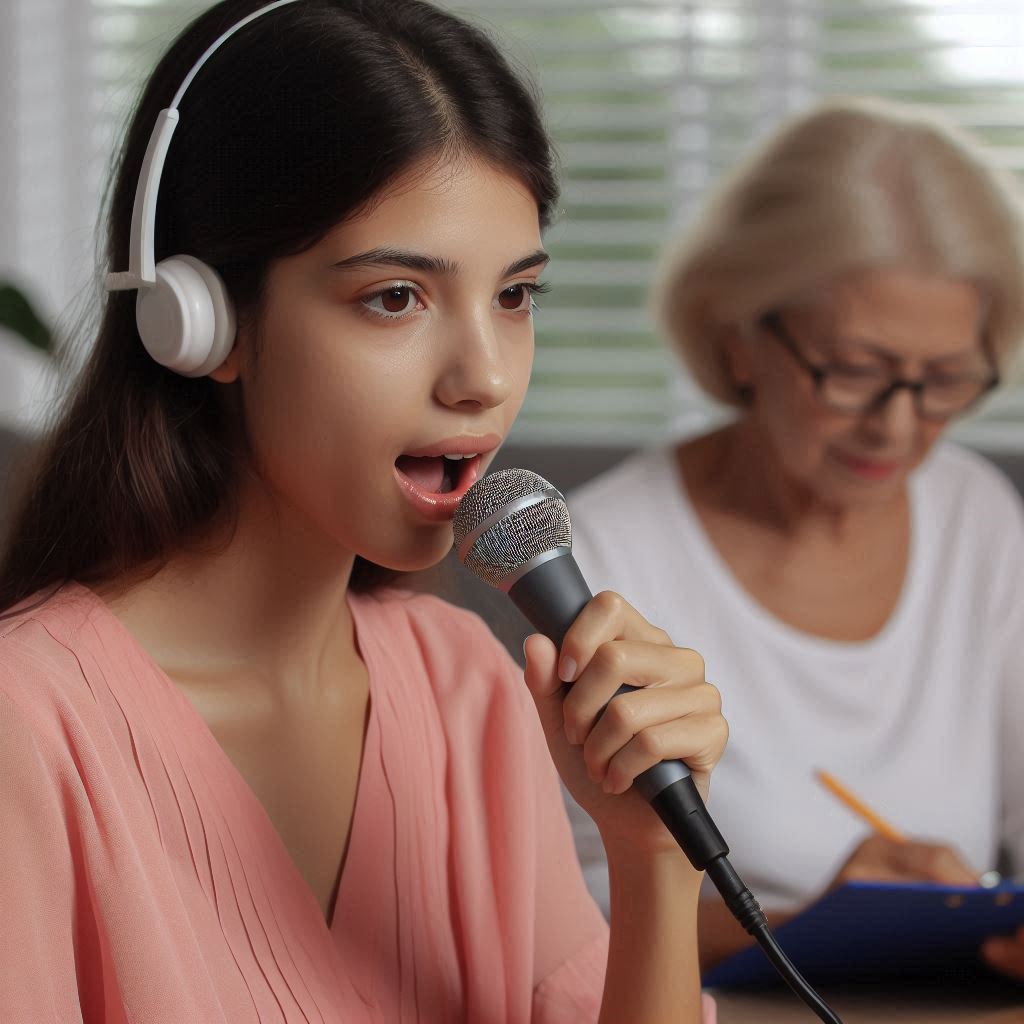Introduction
Speech Therapy for Autism Spectrum Disorders is essential for individuals facing Autism Spectrum Disorder (ASD), a broad range of developmental conditions affecting communication.
Individuals with ASD often encounter significant challenges in both verbal and nonverbal communication, which can impact their daily interactions and social integration.
Speech therapy plays a pivotal role in addressing these challenges by offering targeted interventions aimed at improving language skills and enhancing social communication abilities.
Therapists utilize various techniques such as visual aids, structured activities, and communication strategies tailored to the unique needs of each individual.
Early intervention in speech therapy is crucial as it can lead to better outcomes in communication development and overall quality of life.
By focusing on improving expressive and receptive language skills, speech therapy helps individuals with ASD to better express their needs, understand others, and engage more effectively in social interactions.
Ultimately, speech therapy empowers individuals with ASD by equipping them with essential tools and strategies to navigate and succeed in their communication journeys.
Understanding Autism Spectrum Disorder
Autism Spectrum Disorder (ASD) encompasses a range of developmental conditions affecting social interaction, communication, and behavior.
Symptoms vary widely, from mild challenges to significant impairments in communication and social skills.
Communication Challenges in ASD
Individuals with ASD often struggle with nonverbal communication cues such as gestures, facial expressions, and tone of voice.
Many may also experience delays in spoken language development or may not develop speech at all.
Diverse Communication Methods
Communication in ASD can manifest through different methods, including speech, sign language, picture cards, or assistive communication devices.
Each approach must be personalized to the individual’s strengths and challenges.
Tailored Interventions for Communication Development
Effective interventions focus on enhancing communication skills, fostering social interactions, and improving daily functioning.
Therapeutic strategies often integrate behavioral approaches, speech therapy, and occupational therapy to address communication deficits comprehensively.
Early Intervention and Family Support
Early intervention is critical, as it can significantly improve long-term outcomes in communication and social skills. Professionals work closely with families to create supportive environments that encourage communication development.
Augmentative and Alternative Communication (AAC)
Augmentative and alternative communication (AAC) methods play a crucial role in enhancing communication abilities for nonverbal or minimally verbal individuals with ASD.
These methods provide tools and strategies such as symbols, speech-generating devices, or apps that support expressive and receptive communication skills.
Understanding and supporting communication in individuals with ASD requires a multifaceted approach that acknowledges the diverse ways in which they may communicate.
Tailored interventions, early support, and AAC tools all contribute to enhancing their ability to connect and engage with others effectively.
By focusing on individual strengths and needs, professionals can empower individuals with ASD to achieve their full communication potential.
Role of Speech Therapy in ASD
How speech therapy can benefit individuals with ASD in improving their communication skills
Speech therapy is pivotal in enhancing communication skills for individuals with Autism Spectrum Disorders (ASD).
By targeting specific challenges such as articulation, vocabulary development, and social communication, therapists help individuals express themselves more effectively.
Therapy sessions are designed to foster both verbal and non-verbal communication abilities.
Techniques like visual aids, AAC devices, and social stories are utilized to support comprehension and expression. This targeted approach enables individuals with ASD to navigate social interactions and express their thoughts and emotions.
Discuss the goals of speech therapy for individuals with ASD
The primary goals of speech therapy for individuals with ASD revolve around promoting functional communication.
Therapists aim to improve language comprehension, expand vocabulary, and develop conversational skills.
They also focus on enhancing pragmatic language abilities, such as understanding social cues and maintaining appropriate interactions.
Individualized therapy plans are crucial, tailoring goals to meet the unique needs of each individual. Collaborating closely with families and caregivers ensures continuity of support and reinforces learning outside therapy sessions.
The importance of early intervention in speech therapy for better outcomes
Early intervention in speech therapy significantly impacts outcomes for individuals with ASD.
Starting therapy as soon as communication challenges are identified can mitigate barriers to learning and social interaction.
Early intervention equips individuals with essential communication tools, reducing frustration and enhancing overall quality of life.
Therapists emphasize creating a supportive environment that encourages communication. Positive reinforcement and structured practice sessions help build confidence and skills.
Families play a crucial role in reinforcing therapy goals, extending learning into daily routines and social contexts.
Basically, speech therapy plays a vital role in empowering individuals with ASD to communicate effectively and engage meaningfully with others.
By addressing communication challenges early and utilizing personalized approaches, therapists contribute to the comprehensive development and improved quality of life for individuals on the autism spectrum.
Read: Common Respiratory Conditions Treated by Therapists
Techniques and Approaches in Speech Therapy for ASD
Speech therapy for individuals with Autism Spectrum Disorders (ASD) involves a range of techniques and approaches tailored to the unique needs and abilities of each individual.
These strategies are designed to improve communication skills and enhance overall quality of life. Here are some key techniques and approaches used in speech therapy for ASD:
Visual Supports
Visual supports are tools that help individuals with ASD understand and communicate better.
These can include visual schedules, social stories, and picture communication systems. Visual supports can help individuals with ASD process information more effectively and reduce anxiety in social situations.
Social Stories
Social stories are short narratives that describe social situations and appropriate responses.
They help individuals with ASD understand social cues and expectations, and can improve their social communication skills.
Social stories are personalized to the individual’s interests and experiences to make the information more relatable and meaningful.
Augmentative and Alternative Communication (AAC)
Firstly AAC includes a range of tools and techniques that support communication for individuals with ASD who have difficulty with verbal speech.
AAC systems can be low-tech, such as picture boards or communication books, or high-tech, such as speech-generating devices. AAC helps individuals with ASD express their thoughts, needs, and feelings effectively.
Transform Your Career Today
Unlock a personalized career strategy that drives real results. Get tailored advice and a roadmap designed just for you.
Start NowIndividualized Therapy Plans:
Individualized therapy plans are crucial in speech therapy for individuals with ASD. These plans are tailored to each individual’s specific needs, strengths, and challenges.
By focusing on the unique abilities and communication styles of each individual, therapists can provide targeted interventions that support maximum progress and success.
Successful Interventions and Impact on Communication Skills
Successful interventions in speech therapy for ASD can have a significant impact on communication skills.
For example, using visual supports can help individuals with ASD understand and follow instructions more easily.
Social stories can improve their ability to engage in conversations and navigate social interactions. AAC systems can enhance their ability to communicate their thoughts and feelings effectively.
Overall, the combination of techniques and approaches in speech therapy for individuals with ASD is aimed at improving their communication skills, enhancing social interactions, and promoting independence.
By incorporating individualized therapy plans and innovative interventions, speech therapists can play a crucial role in supporting individuals with ASD in reaching their full communication potential.
Read: Becoming a Registered Dietitian: Tips for Mid-Career Changers
Collaboration with Other Professionals
Collaboration among speech therapists, parents, educators, and other professionals is crucial in supporting individuals with Autism Spectrum Disorders (ASD).
- A multidisciplinary team plays a vital role in developing and implementing comprehensive treatment plans for individuals with ASD.
- Each professional brings a unique perspective and expertise to help address the diverse needs of individuals with ASD.
- Collaboration ensures that interventions are coordinated and cohesive across different settings, such as home, school, and therapy sessions.
An integrated approach involving various professionals can significantly benefit individuals with ASD in overcoming communication challenges.
- Speech therapists work on improving speech and language skills, while educators focus on educational goals and strategies.
- Occupational therapists help with sensory needs, and behavior analysts address behavioral challenges that may impact communication.
- Collaboration ensures that all aspects of a child’s development are considered in the treatment plan.
Regular communication and collaboration among professionals help in monitoring progress, adjusting interventions, and sharing insights and resources.
- Parents play a crucial role in the team by providing valuable information about their child’s strengths, needs, and preferences.
- They also reinforce skills learned in therapy sessions and support their child’s communication development at home and in the community.
- Collaboration with parents empowers them to be active participants in their child’s therapy and overall development.
By working together as a team, professionals can create a holistic and personalized approach to address the unique communication challenges of individuals with ASD.
Read: How to Prepare for Respiratory Therapy School
Addressing Social Communication
Targeting social communication skills in speech therapy for individuals with Autism Spectrum Disorders (ASD) is crucial for their overall development.
It helps them in building meaningful relationships, understanding social cues, and navigating social situations effectively.
Importance of Targeting Social Communication Skills
- Enhances social interactions
- Improves peer relationships
- Facilitates participation in group activities
- Promotes emotional understanding
- Encourages effective communication
Strategies for improving social interaction, joint attention, and pragmatic language skills in individuals with ASD involve a combination of structured intervention techniques, social skills training, and practice in real-life scenarios.
Strategies for Improving Social Communication
- Use visual aids to support communication
- Teach turn-taking during conversations
- Model appropriate social behavior
- Encourage perspective-taking exercises
- Practice social scripts and role-playing
Setting specific social communication goals is essential in speech therapy for individuals with ASD. These goals are tailored to meet the unique needs of each individual and focus on improving their social interaction abilities.
Social Communication Goals and Interventions:
- Goal: Improve eye contact during conversations
- Intervention: Use visual prompts to encourage eye contact
- Goal: Enhance conversational turn-taking skills
- Intervention: Practice structured turn-taking activities
- Goal: Develop skills for initiating and maintaining conversations
- Intervention: Role-play various conversation scenarios
- Goal: Understand nonverbal cues in social interactions
- Intervention: Use videos to teach nonverbal communication
By addressing social communication deficits through targeted interventions, speech therapists can help individuals with ASD improve their social skills, build meaningful relationships, and enhance their overall quality of life.
Read: Respiratory Therapist and COVID-19: Impact and Roles

Strategies for Generalization and Maintenance
When it comes to speech therapy for individuals with Autism Spectrum Disorders (ASD), one of the key factors for success is the generalization and maintenance of communication skills.
Generalization refers to the ability to apply learned skills in various settings and with different people, while maintenance involves the ability to retain and continue using those skills over time.
Here are some strategies to promote generalization and maintenance in individuals with ASD:
Importance of Generalizing Communication Skills
Generalizing communication skills learned in speech therapy sessions to real-life situations is crucial for individuals with ASD.
It helps them effectively communicate their needs, wants, and thoughts in a variety of contexts, leading to improved social interactions and relationships.
Strategies for Promoting Generalization and Maintenance
- Use visual supports: Visual aids such as pictures, symbols, or written cues can help individuals with ASD generalize communication skills by providing a consistent and structured way to communicate across different environments.
- Practice in natural settings: Encourage opportunities for practicing communication skills in natural settings, such as at home, in the community, or during social outings. This helps individuals apply what they have learned in therapy to real-life situations.
- Modeling and reinforcement: Model appropriate communication behaviors and provide positive reinforcement when individuals with ASD use their communication skills effectively. This reinforcement can help maintain and generalize these skills over time.
- Collaborate with other caregivers and professionals: Work closely with parents, teachers, and other caregivers to ensure consistency in promoting generalization and maintenance of communication skills. Collaboration can help reinforce communication strategies across different settings.
- Set realistic goals: Establish clear and achievable goals for communication skills, and break them down into smaller steps. This approach can help individuals make steady progress and feel motivated to continue practicing their skills outside of therapy sessions.
Tips for Parents and Caregivers
- Encourage communication: Create a supportive and communicative environment at home by encouraging individuals with ASD to use their communication skills in everyday interactions. Provide opportunities for them to practice and express themselves.
- Provide structure and routine: Establish predictable routines and schedules to help individuals with ASD feel comfortable and confident in using their communication skills. Consistent routines can also aid in generalization and maintenance of these skills.
- Offer praise and positive feedback: Acknowledge and praise individuals with ASD for their efforts in practicing communication skills, even if they make mistakes. Positive reinforcement can increase their motivation and self-confidence in using these skills outside of therapy.
- Seek support and guidance: Stay informed about the latest strategies and techniques for promoting communication skills in individuals with ASD. Consult with speech therapists, behavior analysts, and other professionals for advice and guidance on how to best support and reinforce communication skills.
- Be patient and persistent: Remember that progress takes time, and individuals with ASD may need ongoing support and practice to generalize and maintain their communication skills. Be patient, persistent, and consistent in your efforts to help them succeed.
By implementing these strategies and tips, parents and caregivers can play a vital role in supporting the generalization and maintenance of communication skills in individuals with Autism Spectrum Disorders.
Consistency, collaboration, and a positive learning environment are key factors in helping individuals with ASD effectively communicate and thrive in various social settings.
Conclusion
In addition, speech therapy plays a crucial role in supporting communication development for individuals with Autism Spectrum Disorders (ASD).
It helps them improve their verbal and non-verbal communication skills, which are essential for social interaction and daily functioning.
By focusing on individualized treatment plans, speech therapists can address specific communication challenges that individuals with ASD may face.
Transform Your Career Today
Unlock a personalized career strategy that drives real results. Get tailored advice and a roadmap designed just for you.
Start NowSeeking professional help and exploring speech therapy options can significantly enhance the quality of life for individuals with ASD.
It is important to understand that early intervention and consistent therapy sessions are key factors in maximizing the benefits of speech therapy for individuals with ASD.
Therefore, if you or a loved one is diagnosed with ASD, consider reaching out to a qualified speech therapist to begin this important journey towards improved communication and overall well-being.




